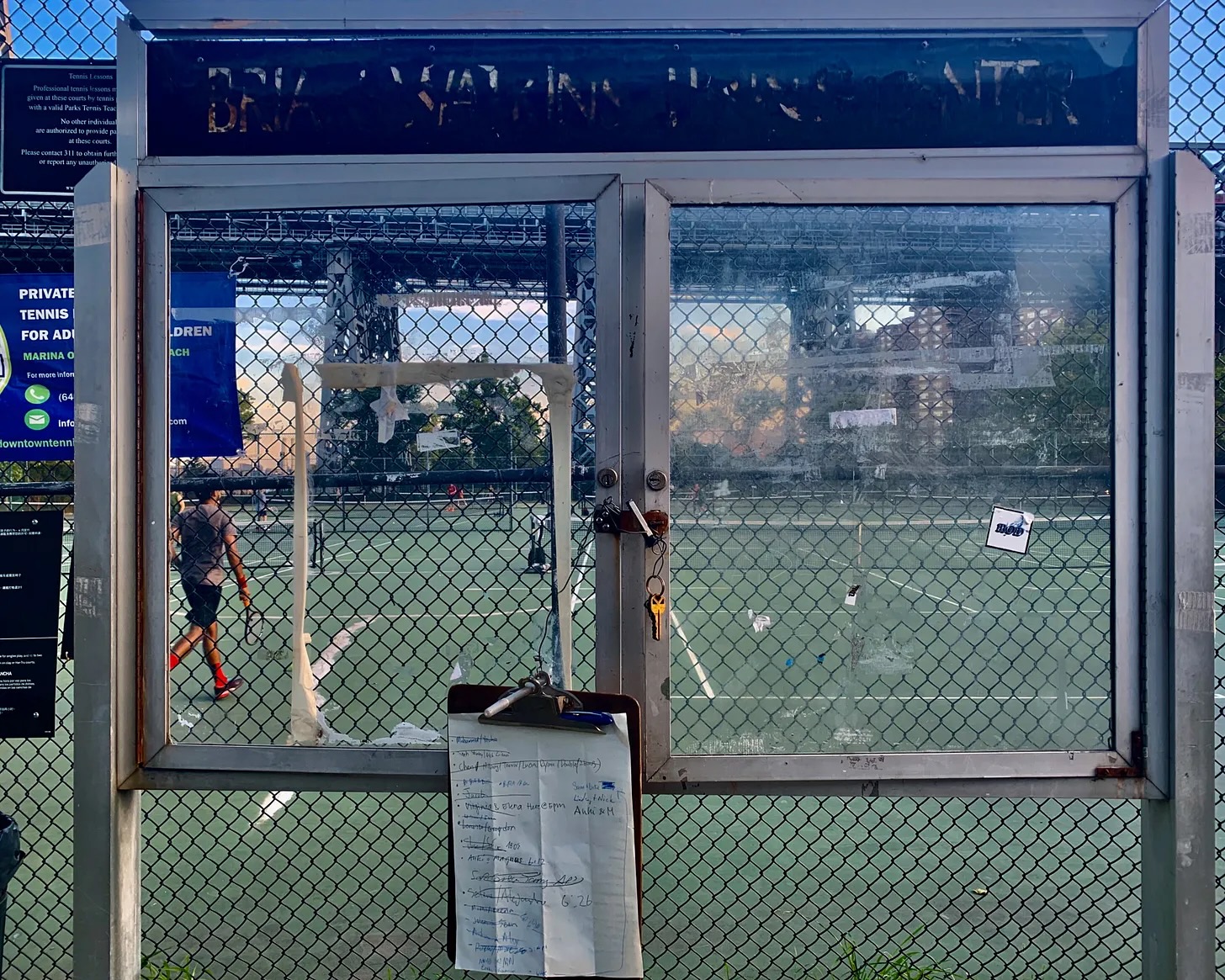The Ultimate Demise of New York’s East River Courts?
Built on a New York ‘flood plain’ the courts will leave tennis loving New Yorkers dry for at least four years

In the summer of 2019, as the U.S. Open show rolled into New York, the city’s public courts became a boon for celebrities: Lindsay Davenport shot a Heineken ad on a court along the Hudson River; Eugenie Bouchard drilled with then-coach Pat Cash at the Bronx’s Cary Leeds Tennis Center; even Daniil Medvedev turned up to play. His choice: the Brian Watkins Tennis Center at Manhattan’s East River Park.
Why East River Park? The proximity to East Midtown, where a lot of the players stay? For the views of the Williamsburg Bridge? Sightseeing spots created by the famous urban planning despot Robert Moses? Or the relative anonymity and no-BS attitude of the Lower East Side?
The regulars at the Center, one of the most popular tennis playgrounds in Manhattan, never asked. And Medvedev never said. But as the 2022 U.S. Open winds down and hurricane season rolls into the Tri-State area, another storied tennis venue could go the way of the Tudor City Courts, the Forest Park Tennis Courts in Queens and the former Cosmopolitan Tennis Club in Harlem: the Brian Watkins Tennis Center.
“This is a very low- and moderate-income neighborhood. Most of the park is lined with public housing. It’s people who have been here for generations, who love this park and this place,” said Pat Arnow, a neighborhood resident who started the group East River Park ACTION. “That is why you are losing the park, because the city doesn’t care about the people who love this park right now… It’s not a tourist park. It doesn’t have a lot of rich people enjoying it.”
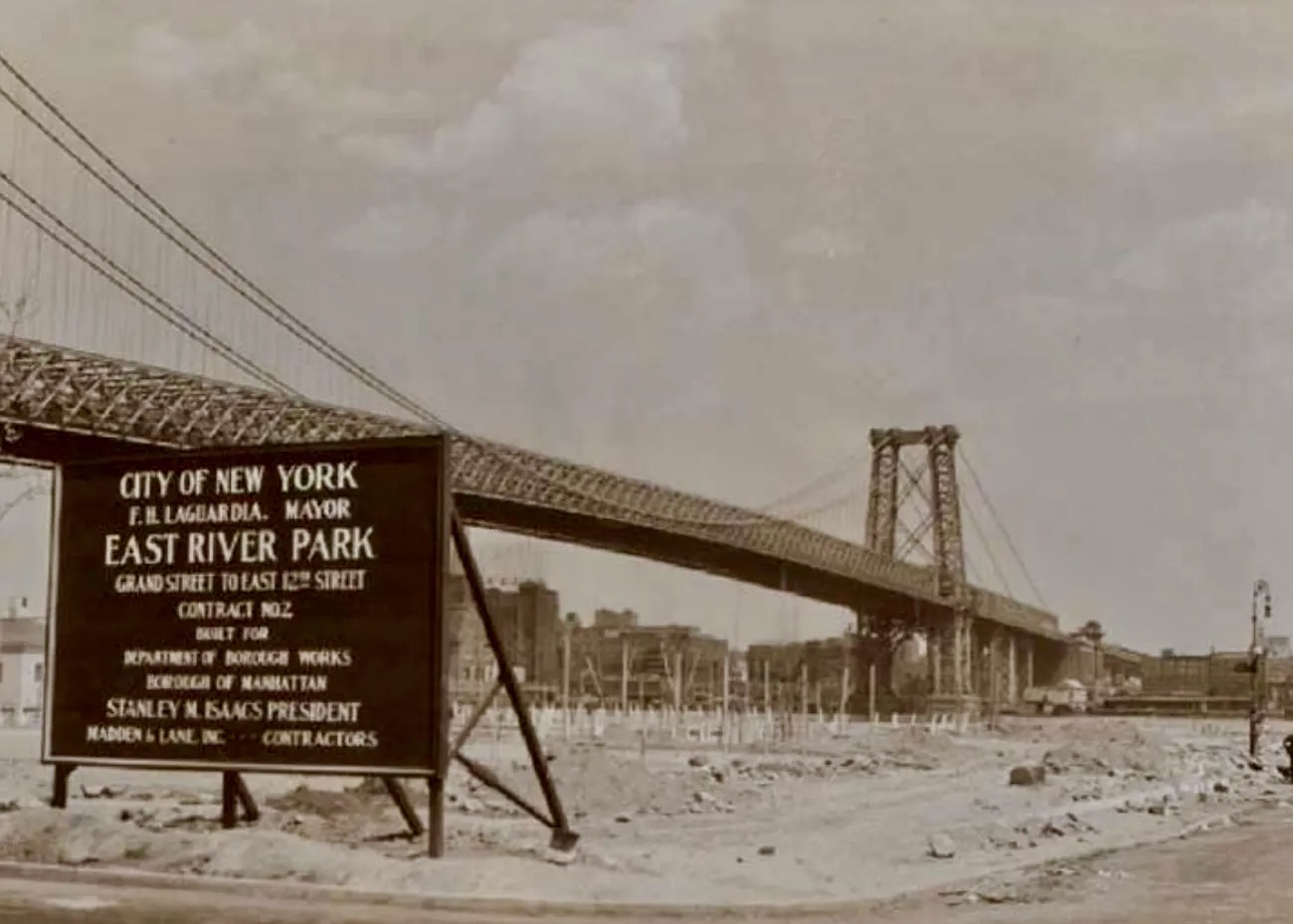
Last winter, despite protests, court petitions and players staging sit-ins amid bulldozers, construction started on the $1.4 billion “East Side Coastal Resiliency Project (ESCR),” — a hurricane-defense plan created in the wake of 2012’s massive Hurricane Sandy, which put FDR Drive and a good part of the East Side under water. Following the current blueprints, city contractors will build a 1.2 mile wall along the water and cover the razed park with eight feet of fill to create a berm that will supposedly block hurricane-sized currents. A new park and new courts have been planned to sit atop the levee in four, maybe five years — or whenever workers finish.

“If we built resilience measures, and didn’t protect the park itself, we would continue failing our communities for the exact reason the environmental justice movement started,” said Carlina Rivera, the City Council member who has represented the area since 2018. “My community doesn’t deserve a park that essentially turns into a bathtub every few years when there’s a hurricane. We deserve a park that’s protected.”
Back to Beginnings
For once, the reviled Moses might have done something good for the city — when he embarked on changing the waterfront, the East River was a hub of slaughterhouses, power stations and railroad yards. In tandem with Franklin D. Roosevelt Drive (FDR), Moses created a tree-shaded esplanade that rolled out with the highway. It housed abundant recreational facilities, lots of green space and windswept views — a respite for the tenements.
Acquiring land for a park in the LES proved prohibitively expensive and legally twisted, however. Instead, the city opted to fill in the waterfront, and in 1939, East River Park opened. It featured a running track, a track house, an amphitheatre for famous producer Joseph Papp’s productions of Shakespeare in the Park, and 12 tennis courts with a storage house and public toilets.
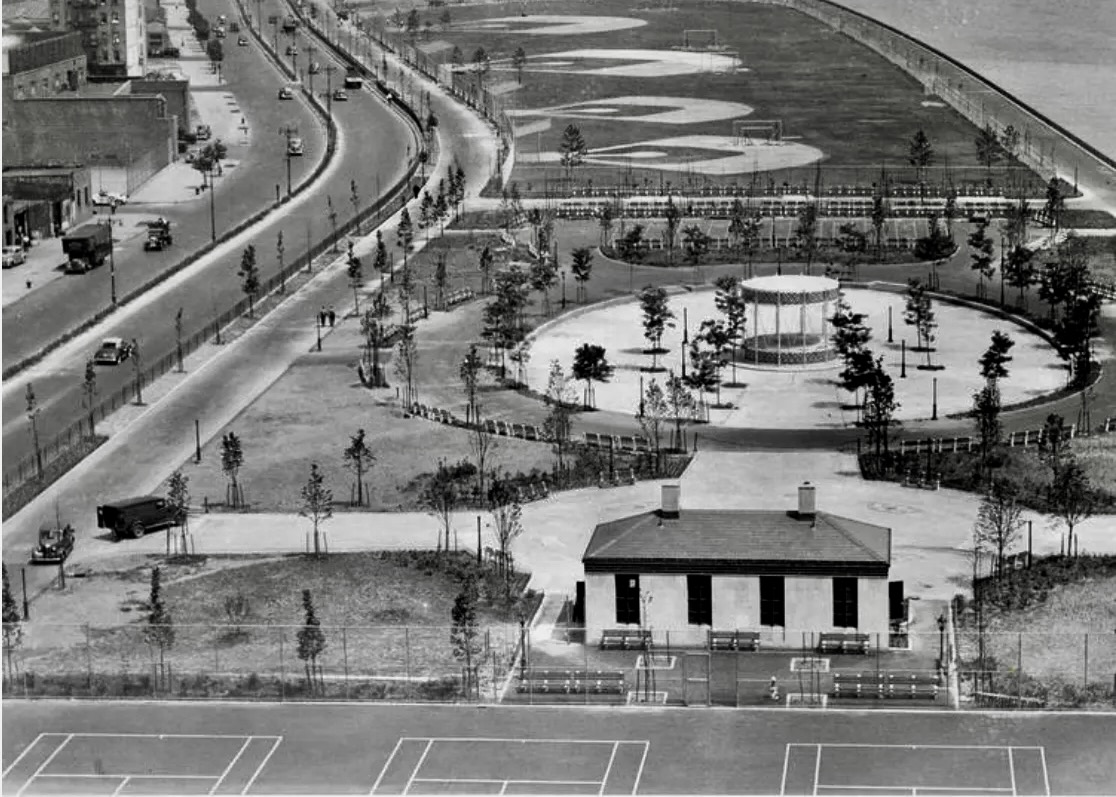
Since then, however, the city has chipped away at the park. In 1949, the administration decided to widen FDR and took a section of the park to do it. In 1963, Mayor Robert F. Wagner extended South Street for tourists and pushed into the park. But the most drastic change to the waterfront took place in 2012, when Hurricane Sandy came to town. In a matter of hours, East River Park was under water.
To keep the fate from repeating, not long after Sandy, the administration of outgoing mayor Bill DeBlasio presented a more palatable $760 million plan which would have razed a smaller section of the park, built berms and marshland, and installed floodgates on FDR Drive. In 2018, however, De Blasio scrapped it for the ESCR, a proposal he argued would create a better-protected space and make construction faster and easier. It would also temporarily sacrifice the newly refurbished track, the amphitheatre, and the courts, while permanently demolishing 1,000 trees — some 80 or more years old — an ecology project, and possibly the landmark protected tennis and track houses.
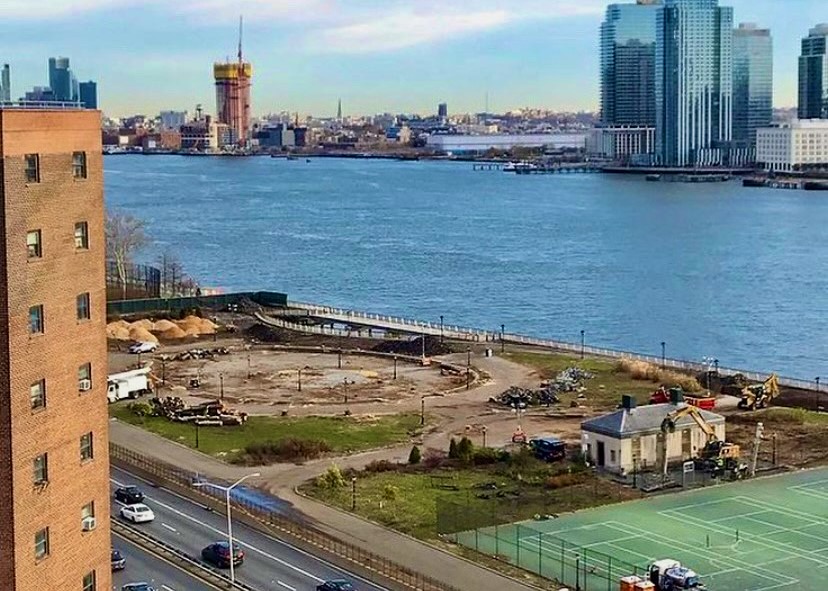
Local citizens under several groups, including East River Park ACTION, filed lawsuit after lawsuit. Initially, it seemed something might stick. But last December — the final month of de Blasio’s administration — demolition crews began working around the clock under constant police protection and in defiance of an appeals court restraining order to flatten the Southern half of the park, while men, women and their children sat on park amenities and stood in front of trees. On December 16, the restraining order was rejected, but by then, the damage was irreversible.
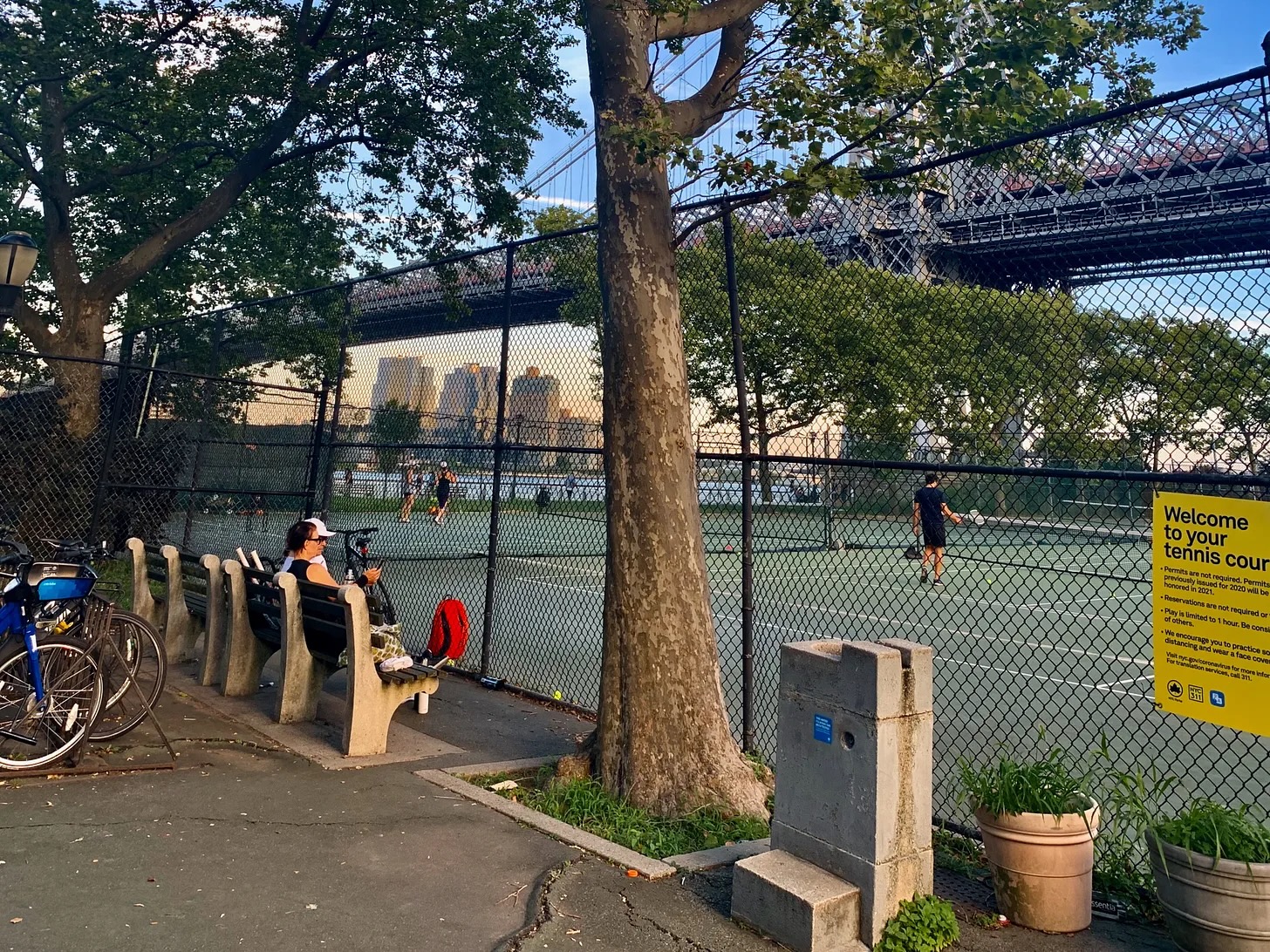
One of the more widely used courts in the city, the East River courts were renamed — a bit morbidly — the Brian Watkins Tennis Center in honor of a Utah tourist and University of Idaho tennis player who was slain in the subway while attending the 1990 U.S. Open. By spring 1991, the courts had a $1.7 million resurfacing and $30,000 donation from an anonymous donor to teach tennis to local children.
Used nearly year-round, the courts had recently fallen into disrepair, with cracks filled with cement, downed windscreens, and nets held up, at times, with spare tennis balls, cans and anything leftover in racquet bags. With one of the major tennis centers now gone, other tennis associations across the city have braced themselves for the spill over.
“My guess is that we are definitely seeing spill over. Fort Greene is very, very busy this season,” said Sam Burns of the Fort Greene Tennis Association, which operates the closest set of two or more public courts next to the East River. “I’m really glad that the City has committed to rebuilding the courts by including them in the improvement plans and I know that the NYC tennis community will be extremely happy when they have access to public tennis courts again.”
